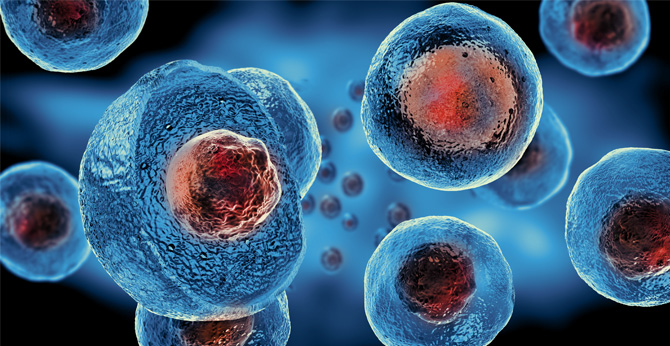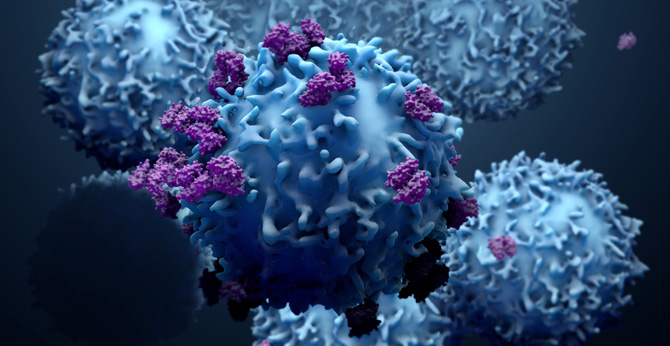All products and services are For Research Use Only and CANNOT be used in the treatment or diagnosis of disease.
The vector of anti-ROR1 chimeric antigen receptor (CAR) is constructed for the engineering of T cells to target human ROR1. The T cells are genetically modified through transduction with a lentiviral vector expressing scFv of anti-ROR1 antibody linked to 4-1BB (CD137) and CD3ζ signaling domains. And the vector product was designed for the treatment of B cell-chronic lymphocytic leukemia.
|
CAR Construction :
Fig.1 Specificity and epitope mapping studies by ELISA. The binding of chimeric rabbit/human IgG1 R11, R12, Y31, and P14 to immobilized human ROR1 (Fc-hROR1), mouse ROR1 (Fc-mROR1), and human ROR2 (hROR2-Fc) was analyzed by ELISA. Yang, J., Baskar, S., Kwong, K. Y., Kennedy, M. G., Wiestner, A., & Rader, C. (2011). Therapeutic potential and challenges of targeting receptor tyrosine kinase ROR1 with monoclonal antibodies in B-cell malignancies. PloS one, 6(6), e21018. |
|
CAR Construction :
Fig.2 Epitope mapping studies by surface plasmon resonance. Shown are Biacore 6100 sensorgrams obtained for the binding of IgG1 R11, R12, and Y31 to immobilized Fc-hROR1. Yang, J., Baskar, S., Kwong, K. Y., Kennedy, M. G., Wiestner, A., & Rader, C. (2011). Therapeutic potential and challenges of targeting receptor tyrosine kinase ROR1 with monoclonal antibodies in B-cell malignancies. PloS one, 6(6), e21018. |
|
CAR Construction :
Fig.3 Affinity measurements of R12 by surface plasmon resonance. The mAbs were injected at five or six different concentrations (shown in different colors) ranging from 1.5 to 100 nM. Each concentration was tested in duplicates. Yang, J., Baskar, S., Kwong, K. Y., Kennedy, M. G., Wiestner, A., & Rader, C. (2011). Therapeutic potential and challenges of targeting receptor tyrosine kinase ROR1 with monoclonal antibodies in B-cell malignancies. PloS one, 6(6), e21018. |
|
CAR Construction :
Fig.4 Flow cytometry was used to analyze the binding of IgG1 R11 (green line; 5 mg/mL), R12 (blue line; 1 mg/mL), and Y31 (red line; 5 mg/mL) to (A) the surface of JeKo-1 (top) and HBL-2 cells (bottom). Biotinylated IgG1 in combination with FITC-CD19/APC-CD5 were detected with PE-streptavidin. The y axis depicts the number of events, the x axis the fluorescence intensity. Yang, J., Baskar, S., Kwong, K. Y., Kennedy, M. G., Wiestner, A., & Rader, C. (2011). Therapeutic potential and challenges of targeting receptor tyrosine kinase ROR1 with monoclonal antibodies in B-cell malignancies. PloS one, 6(6), e21018. |
|
CAR Construction :
Fig.5 PI staining followed by flow cytometry was used to analyze the CDC potency of IgG1 R11, R12, and Y31 in comparison to IgG1 P14 (negative control), and rituximab. The percentage of dead cells (PI-positive) after RTX-mediated CDC was 70.7% (JeKo-1), 54.4% (HBL-2), and 12.7% (CLL). Yang, J., Baskar, S., Kwong, K. Y., Kennedy, M. G., Wiestner, A., & Rader, C. (2011). Therapeutic potential and challenges of targeting receptor tyrosine kinase ROR1 with monoclonal antibodies in B-cell malignancies. PloS one, 6(6), e21018. |
|
CAR Construction : R12 scFv-BBζ
Fig.6 Flow cytometric analysis of purity and phenotype of ROR1 CAR-modified CD4+ and CD8+ T cells showing expression of tCD19 in CD4+ (top panels) or CD8+ (bottom panels) T cells either mocktransduced, after transduction with the ROR1 CAR (pre-selection). All samples are gated on CD3+ cells. D, cytolytic activity of Berger, C., Sommermeyer, D., Hudecek, M., Berger, M., Balakrishnan, A., Paszkiewicz, P. J., ... & Riddell, S. R. (2015). Safety of Targeting ROR1 in Primates with Chimeric Antigen Receptor–Modified T CellsSafety of ROR1 CAR-T Cells in Macaques. Cancer immunology research, 3(2), 206-216. |
|
CAR Construction : R12 scFv-BBζ
Fig.7 Luminex cytokine assay of supernatants obtained after 24 hours from triplicate co-cultures of 5×104 CD4+ or CD8+ROR1 CAR-T cells with K562/ROR1 cells or media alone. Cytokine levels in media controls were below detection level. Data in C-F is shown for macaque A13002 and representative of results in 3 animals. Berger, C., Sommermeyer, D., Hudecek, M., Berger, M., Balakrishnan, A., Paszkiewicz, P. J., ... & Riddell, S. R. (2015). Safety of Targeting ROR1 in Primates with Chimeric Antigen Receptor–Modified T CellsSafety of ROR1 CAR-T Cells in Macaques. Cancer immunology research, 3(2), 206-216. |
|
CAR Construction : R12 scFv-BBζ
Fig.8 Body weight and serum chemistry before and at the indicated days after the T-cell infusion. The grey shaded area demarks the normal range for each parameter in rhesus macaques. Berger, C., Sommermeyer, D., Hudecek, M., Berger, M., Balakrishnan, A., Paszkiewicz, P. J., ... & Riddell, S. R. (2015). Safety of Targeting ROR1 in Primates with Chimeric Antigen Receptor–Modified T CellsSafety of ROR1 CAR-T Cells in Macaques. Cancer immunology research, 3(2), 206-216. |
|
CAR Construction : R12 scFv-BBζ
Fig.9 Detection of a transgene product-specific T-cell response after transfer of ROR1 CAR-T cells. Aliquots of these cultures were evaluated in a cytotoxicity assay for recognition of autologous 51Cr-labeled ROR1 CAR-T cells or unmodified T cells. Berger, C., Sommermeyer, D., Hudecek, M., Berger, M., Balakrishnan, A., Paszkiewicz, P. J., ... & Riddell, S. R. (2015). Safety of Targeting ROR1 in Primates with Chimeric Antigen Receptor–Modified T CellsSafety of ROR1 CAR-T Cells in Macaques. Cancer immunology research, 3(2), 206-216. |
More Published Data More Published Data
There are currently no customer reviews or questions for Anti-ROR1 (R12) h(41BB-CD3ζ) CAR, pCDCAR1 (CAR-LC216). Click the button below to contact us or submit your feedback about this product.
For research use only. Not intended for any clinical use. No products from Creative Biolabs may be resold, modified for resale or used to manufacture commercial products without prior written approval from Creative Biolabs.
For any technical issues or product/service related questions, please leave your information below. Our team will contact you soon.
 NEWSLETTER
NEWSLETTER
The latest newsletter to introduce the latest breaking information, our site updates, field and other scientific news, important events, and insights from industry leaders
LEARN MORE NEWSLETTER NEW SOLUTION
NEW SOLUTION
CellRapeutics™ In Vivo Cell Engineering: One-stop in vivo T/B/NK cell and macrophage engineering services covering vectors construction to function verification.
LEARN MORE SOLUTION NOVEL TECHNOLOGY
NOVEL TECHNOLOGY
Silence™ CAR-T Cell: A novel platform to enhance CAR-T cell immunotherapy by combining RNAi technology to suppress genes that may impede CAR functionality.
LEARN MORE NOVEL TECHNOLOGY NEW SOLUTION
NEW SOLUTION
Canine CAR-T Therapy Development: From early target discovery, CAR design and construction, cell culture, and transfection, to in vitro and in vivo function validation.
LEARN MORE SOLUTION